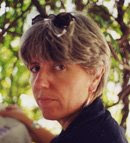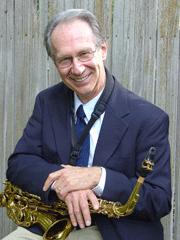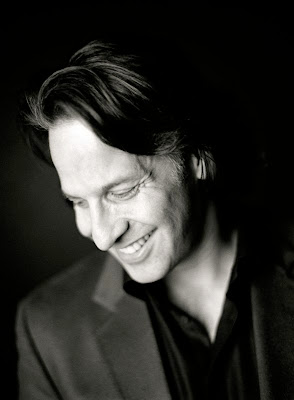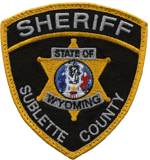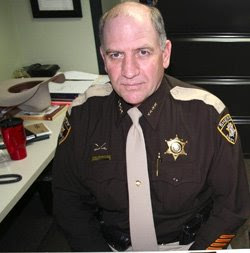
At the end of my freshman year of college at BYU, I injured my left knee in a fencing tournament. That single misstep dictated the next several months of my life, through consequential knee surgery in Salt Lake City, and subsequent recuperation over the summer months at home in Wyoming. Good friends rallied around me and helped keep my spirits high with trips to Jackson Hole and Pinedale, helicopter rides and fine dining, dances, music, and distraction.
When it came time to return to Utah in the fall of 1974, one of those friends, a classmate of mine from high school, decided to drive down to Provo with me, and I took her, en route, on a late August drive up Provo Canyon to Sundance. John Denver was playing on the car stereo, "Rocky Mountain High." Water was rolling swiftly downstream over boulders while the sun, truly, danced through the aspens as we wound up the scenic drive to the place that had become a special place of refuge for me from the intensity of university life, a place where one could hear the air, and the mountain. Timpanogos.
Pam was enchanted. The lure of the setting was so complete, she decided to move to Provo, to work and possibly go to school, instead of staying home working in the oil fields or cattle ranches of Wyoming.
Fall came, the aspens turned their brilliant gold, and the first snow fell.
We went up to Sundance to apply for work.
Shortly thereafter, around the Christmas holidays, I received a post-interview call from Sundance. The good news was, they were offering me the job. The bad news was, the offer was for me, and not for my friend, Pam.
By that time, I'd decided to return to school, so I turned down the offer and asked them to offer the position to Pam, which she happily accepted.
The job turned out to be governess to the children of Bob and Lola Redford.
Pam became an extended accessory in the Redford household in the mountains at Sundance, doing all sorts of odd jobs, including picking up people like Paul Newman at the airport in Salt Lake City when he'd fly into town, helping with the household, and running the then school age children of Bob and Lola Redford here and there.
I went back to school. At that point two roads truly diverged. Pam worked for Redfords for an extended time, then left, living up the canyon. I continued with my studies.
Alone, this would be an interesting story.
But the world, as usual, shrinks to fit.
Another friend of mine also knew the Redfords. Brett Parkinson had family connections, an older brother who'd met Lola in New Orleans when he was a medical resident at Tulane. In addition to being a local dermatologist in Provo, Rick Parkinson occasionally taught creative writing classes in the English department at BYU. One semester I sat in from time to time, and there, among the students, was a slightly older very attractive woman who clearly had a gift for writing. The students only knew her as "Lola," and when she read her essay to the class on someone she knew, "Bob" was to them, just her husband.
They didn't know "Bob" was Robert Redford.
Lola was a striking figure, elegant in simple denim, who carried fringed leather beaded purses, drove a Porsche, fast, and liked to go antiquing.
I attended the Women's Conference at the Salt Palace in Salt Lake City in 1977, where, amid controversy over potential passage of the Equal Rights Amendment, nearly 14,000 people converged at the culmination of the International Women's Year. One of the featured speakers was Lola Redford. Brett, unable to be there, had asked me to record her speech for him. As she spoke of her years as a young mother married to a struggling actor in New York, newly involved in consumer issues (she founded CAN, Consumer Action Now, in 1970) I had an epiphany.
This was not "Robert Redford's wife."
He was Lola Redford's husband. She was a force of nature.
Lola Van Wagenen.
Lola's own path subsequently diverged, and Lola Van Wagenen went back to school, got her doctorate in American history from New York University, and became founding director of CLIO Visualizing History. She produced the documentary Miss America: A Documentary Film for the PBS series, The American Experience, and has served on a number of national boards, continuing an over thirty year involvement with educational and consumer action issues that have always been her passion.











